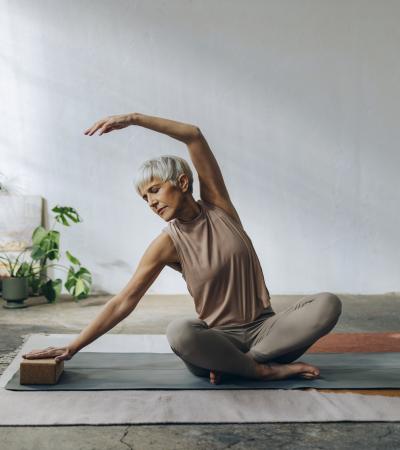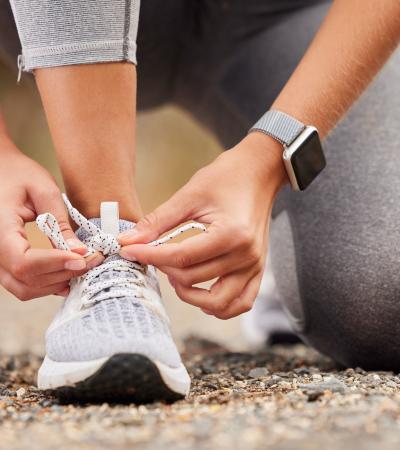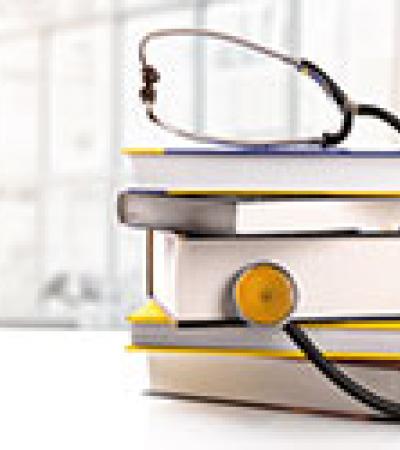The Science & Technology Division of the Akron Summit County Public Library developed and implemented a program to loan out wearable fitness trackers to low-income residents in the city of Akron. This program sought to get residents more active and also teach them about library health resource, so participants were required to attend two training sessions on National Library of Medicine (NLM) resources.
The program, which also included a research component to track effectiveness, was a collaboration with the University of Akron Department of Sport Science & Wellness Education and all funding came from the Greater Midwest Region of the National Network of Libraries of Medicine (NNLM).
Advanced Planning
We approached the project with three initial questions: What sort of fitness trackers would be best suited for our project? Which NLM resources would be most beneficial for participants to be made aware of? And how should we locate and organize our fitness cohorts?
Our first step to answer these questions involved establishing a partnership with the University of Akron Department of Sport Science & Wellness Education through the help of the Summit County Office of Minority Health. During the grant period (through April 2018), the University of Akron’s Department of Sport Science and Wellness Education provided weigh-ins and waist circumference measurements and administered the International Physical Activity Questionnaire (IPAQ) at the initial meeting to assess current habits. The department also provided speakers (University Professor Mary Jo McCracken and Assistant Professor Judith A Juvancic-Heltzel) for the initial meeting, and then served as consultants as library staff eventually took on the full presentation responsibility. We currently provided a scale and paper measuring tapes at each presentation. We do not administer the IPAQ.
Next, we used online research to determine what the right research tracker would be. We found that the Fitbit Charge 2 Activity Tracker best met our needs of having an adjustable wristband, a heart rate monitor and a distance calculator. Then Lyndsey Wasio and Kelli Nikola used a May 2017 NLM consumer health blog by Hannah Sinemus, the professional input of three library staff, the USDA Food Composition Database, and the Akron-Summit County Public Library’s databases to develop a presentation that could be used to inform all library staff. Finally, we determined the fitness trackers would be loaned out for six weeks.
Marketing
Our initiative was targeted toward three groups from the residents of the city of Akron, the largest city in Summit County, where the poverty rate is 14.8 percent and the obesity rate averages 34.2 percent, with some census tracts as high as 44 percent. The first group was the Blue Line Beginners (BLB) — a group of tech-savvy people training to run their first marathon. Next, the Akron Marathon, a group of African American men and women from The Summit County Office of Minority Health in their mid-20s to mid-30s, comprised of several social workers and community health workers. Finally, a group of women in their 50s and 60s who meet at a branch library for a weekly Tai Chi exercise program.
During the BLB’s initial presentation, we realized that they required less instruction, so we cut the presentation in half and reduced the number of staff members present. In slight contrast with the BLB, the second group proved to be very interested in the NLM resources. However, while the BLB seemed to have more prior knowledge on the technology and health in general, both groups were excited and motivated to participate in the program. Overall, we were successful in engaging both of these diverse groups of people.
That said, we did face some difficulty in the beginning stages of finding our cohorts. Several groups who were excited about the project backed out when they were informed the fitness trackers were for loaning and not to keep, while others did not have a desire to learn about new technology. The third group, an established exercise group formed at our Goodyear Branch, was trying to commit to a healthy lifestyle. We approached their branch manager, who arranged for us to present to the group. They were interested both in learning about the NLM resources and in learning to use a fitness tracker.
Budgeting
We spent $2,679 on this program. This included the cost of 20 Fitbit Charge activity trackers, various size bands, at a cost of $124.95 each (total of $2,499).
We also funded six University of Akron student workers at $30 each (total of $180). Each student worker was paid $30 for each session – about 1 hour and 45 minutes each. The students provided weigh-ins and waist circumference measurements and administered the IPAQ at the initial meeting to assess current habits.
Day-of-event Activity
The set-up for our program required gathering a team of Akron-Summit County Library staff, two professors from the University of Akron, Dr. Mary McCracken and Dr. Judith Juvancic-Heltzel, and two undergraduates working in their respective sports science labs.
In addition, we had Lyndsey Wasio and Kelli Nikola create a presentation to be delivered to the cohorts from their research in library databases, input from professionals, USDA Food Composition Database, and a May 2017 consumer health blog by Hannah Sinemus. We also purchased the fitness trackers with library funds, assigned a barcode to each, and cataloged them with a six-week loan period.
In our first presentation to the Blue Line Beginners, we had all team members (Monique Mason, Kelli Nikola and Lyndsey Wasio of the Akron Public Library; Dr. Mary McCracken and Dr. Judith Juvancic-Heltzel, plus the two undergraduates) present. We found that this was too many staff members and decided to streamline the presentation team for the future.
In this first session, the students provided an initial “weigh-in” for each participant on the first day. We held a final weigh-in six weeks later when we collected the fitness trackers.
Program Execution
We believe our program was mutually successful for both the residents of Akron’s activity level and NLM resource awareness.
Our success did not come without obstacles, though. Our biggest problem proved to be getting the library staff familiar with the fitness trackers. Lyndsey Wasio developed a troubleshooting guide for staff to ensure all were comfortable using the devices.
Locating cohorts was quite challenging, and as mentioned earlier, several groups were approached to participate but opted not to when they learned that the fitness tracker was a loan rather than to keep, or they simply did not want to bother with the new technology. We now utilize book discussion and group meetings within the libraries and expect to find cohorts to continue the program beyond the current funding period.
Finally, we encountered the issues with library cards, as our library does not allow one to check out if fines reach $10, and some potential participants were over that amount. In response, our library circulation department was more than accommodating and waived those fines.
We relied on anecdotal reports of fitness tracker satisfaction, self-reports of increases in activity, self-reports on the usefulness of NLM and Akron library resources, and results from the weigh-ins. While the University of Akron requested that we keep track of each participants' starting and ending weight, library policy prohibited us from maintaining a record of the names in library programs, so this has not been completed.
The impact of this program is just beginning to be felt by the community. First, our Akron library staff have become knowledgeable on the fitness technology. Next, through waiving library fines, we have reignited participants' use of their library. It has also been reported the fitness trackers were successful in increasing activity levels.
Perhaps one of the most significant benefits of this program was that it created a positive dialogue between the staff and the community we serve. The funds provided allowed the Akron public library to purchase materials that would otherwise not have been in our budget. In turn, these materials allowed us to better serve communities in need by providing access to technology contingent on attending health resource information programs.
Advice
I would strongly recommend this kind of program to those who are striving to engage their communities with healthy living in the modern-day context. Healthy lifestyles today are becoming more and more intersected with technological advances. We know that technology can make certain areas of our lives easier, but not all know that it can ease the struggles of healthy living. Providing lower income and/or disadvantaged residents with these valuable technological tools will have lasting wellness impacts.
To those interested, I would recommend you locate groups of participants who will be eager about the program. Next, try to find a partnering institution, ideally a local school or university, which will aid you with the presentations, instruction and health information tracking. Finally, I advise you consider tailoring the instruction and presentations to each participant group’s specific needs. This way, you will only provide the most pertinent, interesting and impactful information.





